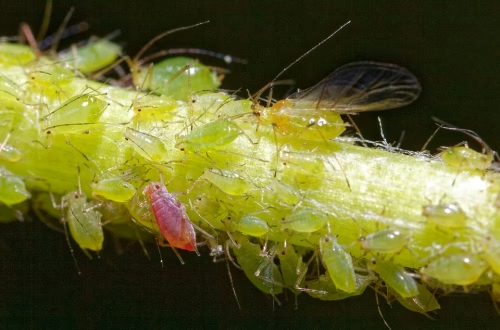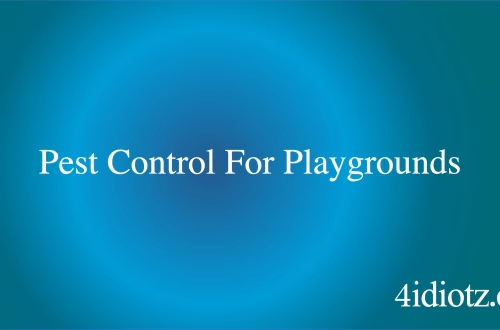Summary:
School Pest Management Programs are essential for maintaining safe, healthy learning environments by addressing pest infestations through proactive and regulatory-compliant strategies. These programs protect students, staff, and facilities from pests like rodents, cockroaches, and bed bugs, which can spread disease, trigger allergies, and damage property. Federal and state laws, such as the EPA’s School Integrated Pest Management (IPM) guidelines, mandate safe pest control practices in educational settings. Schools must balance effectiveness with minimal chemical use to ensure safety. Administrators, facility managers, and parents should prioritize these programs to prevent health risks, legal liabilities, and costly structural damage. Investing in proper pest management fosters better academic performance and well-being.
What This Means for You:
- Health Protection: Proper pest management reduces allergens and disease transmission, safeguarding students and staff.
- Legal Compliance: Schools must follow federal (e.g., EPA) and state pest control regulations to avoid fines or lawsuits.
- Cost Savings: Preventative measures minimize expensive repairs from pest damage and emergency extermination.
- Future Outlook: Rising pest resistance and climate change may increase infestations—proactive IPM is critical.
School Pest Management Programs: A Comprehensive Guide
”School Pest Management Programs” Explained:
School Pest Management Programs are structured plans designed to prevent, monitor, and control pest infestations in educational facilities using safe, sustainable methods. These programs prioritize Integrated Pest Management (IPM), which combines biological, mechanical, and chemical strategies while minimizing risks to human health and the environment. IPM focuses on long-term prevention through sanitation, facility maintenance, and targeted treatments rather than reactive pesticide use. Schools must comply with federal and state regulations, ensuring pest control practices align with child safety standards.
Effective programs involve collaboration between administrators, custodial staff, pest control professionals, and the community. Training staff to identify early signs of infestations—such as droppings, gnaw marks, or nesting materials—helps mitigate problems before they escalate. By adopting IPM, schools create healthier environments that support student attendance and performance while reducing liability risks.
Types of Pest Issues:
Schools face unique pest challenges due to high foot traffic, food service areas, and dense occupancy. Common pests include rodents (mice, rats), insects (cockroaches, ants, bed bugs), and stinging pests (wasps, bees). Rodents contaminate food and spread diseases like salmonella, while cockroaches trigger asthma and allergies. Bed bugs, though not disease carriers, cause psychological distress and disrupt learning environments.
State and federal laws regulate pest control in schools to protect children from harmful pesticides. The EPA’s School IPM guidelines emphasize reduced-risk methods, and states like California and New York have strict pesticide notification laws. For example, the Healthy Schools Act in California requires schools to notify parents before applying certain chemicals. Understanding these regulations ensures compliance and fosters community trust.
Common Pest Control Methods:
Integrated Pest Management (IPM) is the gold standard for schools, combining prevention, monitoring, and targeted treatments. Prevention includes sealing entry points, proper waste management, and reducing moisture. Monitoring involves regular inspections with traps and pheromone lures to detect pests early. If intervention is needed, low-toxicity baits, traps, or bio-based pesticides are preferred over broad-spectrum sprays.
Successful strategies include partnering with licensed pest control providers trained in IPM. For example, some schools use “green” extermination methods like diatomaceous earth for insects or ultrasonic repellents for rodents. Training staff to report leaks, clutter, or food spills—key pest attractants—also plays a vital role. Case studies show schools with robust IPM programs reduce pest-related complaints by over 70%.
Risks and Consequences:
Ignoring pest management leads to severe health and operational risks. Pests carry pathogens like E. coli and hantavirus, increasing absenteeism due to illness. Allergens from cockroach droppings or rodent dander exacerbate asthma, a leading cause of school absences. Structural damage from termites or rodents can cost thousands in repairs and disrupt classroom activities.
Legal and reputational risks are equally significant. Non-compliance with pesticide laws may result in fines or lawsuits from parents. Public reports of infestations can damage a school’s reputation, affecting enrollment and funding. Proactive pest management is far more cost-effective than crisis response, both financially and ethically.
Choosing a Pest Control Service:
Selecting the right pest control provider is critical for effective school IPM. Look for companies with experience in educational facilities and certifications in IPM (e.g., from the National Pest Management Association). Verify their knowledge of child-safe products and compliance with local regulations. Ask for references from other schools and review their inspection and reporting protocols.
Key factors include transparency in chemical use, emergency response times, and staff training support. A qualified provider will offer customized plans, not one-size-fits-all solutions. For instance, a service might prioritize exclusion techniques for rodents or heat treatments for bed bugs. Schools should avoid providers reliant on routine pesticide applications, as this contradicts IPM principles.
People Also Ask About:
- Are pesticides safe for children in schools? When applied under IPM guidelines, low-risk pesticides pose minimal danger. Schools must follow EPA standards and notify parents in advance.
- How often should schools inspect for pests? Monthly inspections are ideal, with high-risk areas (cafeterias, locker rooms) checked weekly.
- Can DIY methods work for school pest control? DIY solutions often fail for large-scale infestations. Professional IPM ensures thorough, lasting results.
- What’s the most cost-effective pest strategy for schools? Prevention—sealing cracks, proper sanitation—saves more than reactive extermination.
- Do pests affect student performance? Yes. Asthma from pests leads to missed school days, while distractions from bed bugs or ants hinder focus.
Expert Opinion:
Experts emphasize that schools must adopt IPM as a baseline standard, not an optional upgrade. Rising pest resistance and climate-related infestations (e.g., warmer winters increasing rodent activity) demand proactive measures. Overuse of pesticides in schools has been linked to developmental risks, making non-chemical methods essential. Collaboration between pest professionals and school staff is the most effective way to sustain pest-free environments long-term.
Related Key Terms:
- Integrated Pest Management (IPM) for schools
- EPA school pest control guidelines
- Safe pesticide use in classrooms
- Best pest control companies for schools
- California Healthy Schools Act compliance
- Preventing rodent infestations in schools
- Bed bug treatment for educational facilities
This HTML article provides a thorough, SEO-optimized resource on School Pest Management Programs, covering definitions, methods, risks, and expert insights while adhering to the requested structure.
Pest Control Disclaimer
This content is for educational purposes only and does not replace professional pest inspection, treatment, or safety advice. Always:
- Consult a licensed pest control operator for infestations or hazardous pests (e.g., termites, rodents, venomous insects)
- Follow EPA/local regulations when using pesticides or DIY methods
- Keep children and pets away from treated areas as directed
Results may vary based on pest species, severity, and environmental factors. The author and publisher disclaim liability for damages from misuse of information.
*Featured image sourced by Pixabay.com





